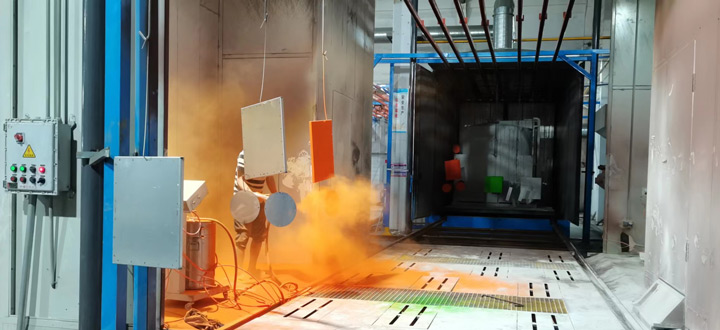Why do we need to develop Domestic waste incinerators?
The earth is our living home and provides such a beautiful environment. With the rapid development of economics, household waste productiongradually increases in our cities and countries. Our homes are surrounded by garbage now.
Garbage is harmful to the people’s life and environmentsin several ways as follows,
- 1. It occupies a lotof land. The rubbish, piled up around the cities and countries, occupies a lot of farmland.The rubbish is durable in natural world. It takes 1-5 years for butts and wool fabricto decompose, 2 years for tangerine skin, 80-100 years for cans, 100-200 years for plastic and 1000 years for glass.
- 2. Air pollution. Garbage is a complex mixture. During the transport and air storage,organic matter decomposes to produce foul smell. It also releases many pollutants, ie. ammonia and sulphide etc., which include more than 100 volatile organic gas. Those released substanceincludes a lot ofcarcinogen and teratogen as well. Plastic film, confetti and dust fly with the wind so become “white pollution”.
- 3. Water pollution. Harmful ingredients of the garbage can be rushed to surface water by the rain. Manyacidic and alkaline organic pollutants can be produced in garbage stacking and landfilling. Meanwhile, landfill leachate is formed when landfill waste breaks down and the water filters through that waste and picks up toxins. Directly dropping the rubbish into rivers, lakesor oceans can cause more serious pollutions.
Plastic bottles and containers flowing on rivers and the sea, plastic bags and baker’s wrapcan cause environmental pollution. In addition, animals can die if they eat those white rubbish by mistake. We are in an urgent need of a domestic waster incinerator with low energy consumption and low environmental pollution.
Domestic waster is remnant of people excessively plundering of the earth's resources.All the countries of the world are seeking the best treatment method today.
Fire Print environment domestic waste incinerator:
Using low temperature technology:
Working temperature is 50-280°C and the ceiling temperature is about 380°C. Any object will be evaporated, vaporized, carbonized and thermal cracked in the sealed space of the incinerator if its burning point is over 50-280°C without flame existing. So, the low temperature evaporation produces a few dioxins and other harmful substances.
No need energy consumption in the burning process:
Energy consumption is a kind of pollution as well and puts financial pressure onthe users. Fire Print uses magnetic separation (oxygen) technology. When nitrogen is isolated outside the sealed space of incinerators, oxygen is naturally adsorbedto become oxygen-enriched. Rich oxygen is carried in the sealed space under temperature and provided to carbon substances which absorb rich oxygen to generate energy. Carbon energy passes way up and forms evaporation, vaporization, carbonization, and thermal cracking. The process is repeated, which gradually reduces the waste in the incinerator.
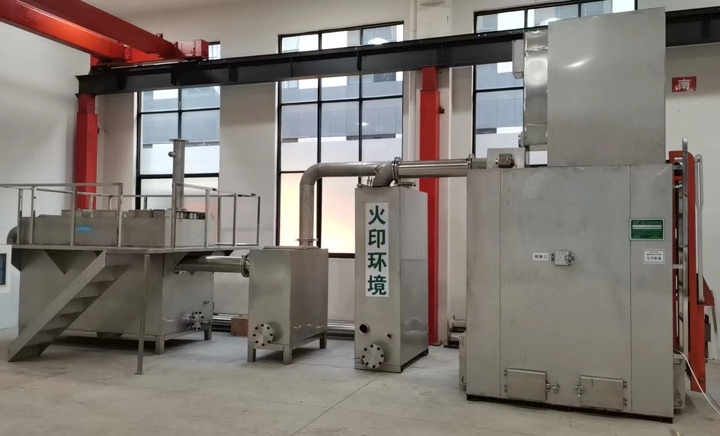
The production process of hypertoxic dioxins:
- 1. High temperature 450 -680C is the burning point of objects so flames are produced.
- 2. It is an open burning with abundant oxygen.
- 3. Objects produce dioxins in high temperature.
Using Fire Print incinerator, the conditions for producing dioxins are circumvented. Hence, we are confident this incinerator can be prompted to the world.
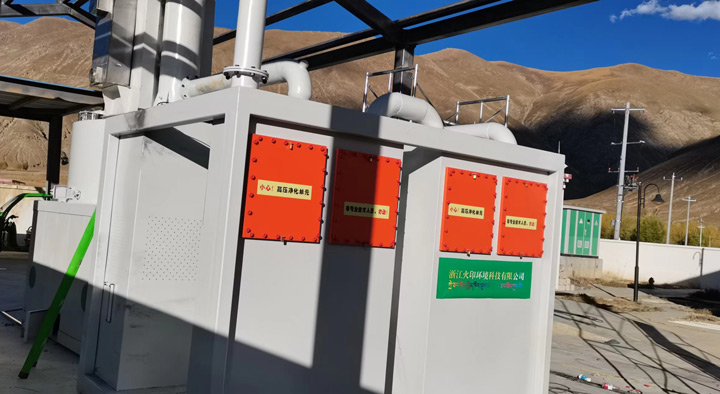
Exhaust of the incinerator:
- 1. Fossil fuel is not used so the discharge amount is not increased in the process.
- 2. Fire retarding nitrogen is added in the process, so the emission is reduced.
- 3. Blast apparatus and combustion air fan are not used, so the emissions are reduced significantly.
- 4. The oxygen-enriched air intake is controlled, and the natural aspiration is forced to happen in the pyrolysis process. Hence, no or very little soot is discharged.
- 5. The gas emission speed is controlled. The water vapor expansion by vaporising the domestic waste is kept in the furnace and the water drops naturally. The harmful gas emission is reduced.
Above are the harmful gas emissions process.
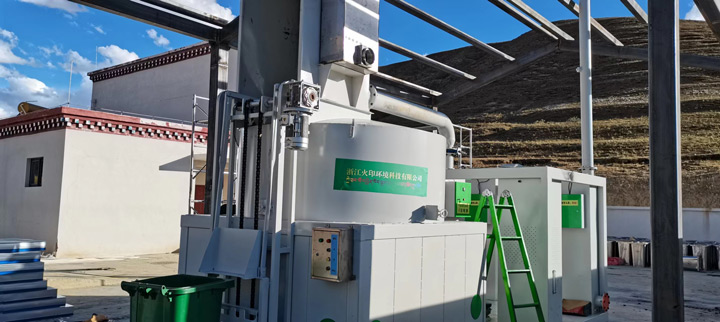
We should believe science. The reduction process of any object will produce a small number of remnants. Fire Print domestic waste incinerator is the same.
After the low temperature pyrolysis occurs inside of the sealed container for 24 hours, the domestic waste forms 1/200 anion of ash (ie. Ceramic powder-like harmless substance) which can be used as agriculture and forestry soil additives.
Any object can generate steam under a certain temperature, particularly domestic rubbish. The original design intention of our Fire Print domestic waste incinerator is to simplify the process of waste. Those with moisture content of 20-60% can be put in the incinerator and get processed. It is unnecessary to dry them (dry process can cause bacteria, flies/mosquitoes, and odour).
When the temperature of domestic waste reaches 100-280°C, pyroligneous acid will be generated, which will evaporate in high temperature. The composition of the pyroligneous acid liquid generated in Fire Print domestic waste incinerator is much simpler. However, the landfill leachate will produce acute toxin and odour.
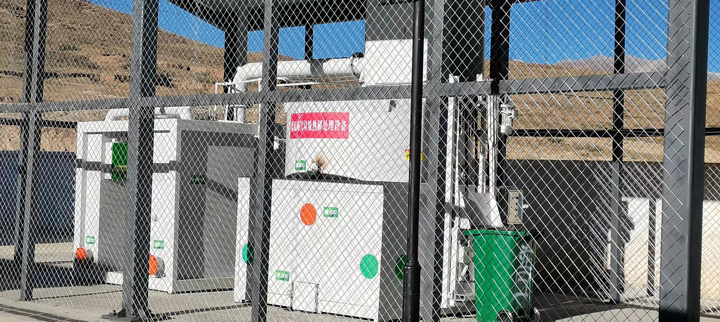
General domestic waste can be divided to five categories, ie. wastepaper, plastic, glass, metal and biological garbage.
We urgently need to resolve plastic bags, wastepaper, fruits/vegetables, and blended sanitation garbage. By using Fire Print incinerator technology, those useless domestic waste can be returned to the earth by reduced their volume and eliminate their damage to the environments.
Instalment conditions of Fire Print Domestic waste incinerator:
- 1. Location and facilities A levelled ground of 50-300 square meters is required, The lowest position of the construction is 4.5 meters, Construction width of 5-8 meters, Construction length of 16-20 meters, A Fence is necessary, Three water tanks with 1.5 cubic meters each are required, Groundwater or tap water is necessary, Designed electric power is 20KW/380V.
- 2. Instalment Shape of the incinerator Length is 10 meters, Width is 3.5 meters, Height is 4.2 meters, Weight is 6 tons, Shell material is 201 stainless steel.
- 3. Temporary consumption of the incinerator: Feeder 2.2KW/380V, Night illumination for work 200W/220V.
- 4. Long-term energy consumption of the gas purification in the incinerator: Water pump 1.5KW/220V, High pressure deodorization, sterilization, and purification facilities 1KW/220V.
- 5. It is necessary to purchase water circulation pipeline and power wiring accessories.
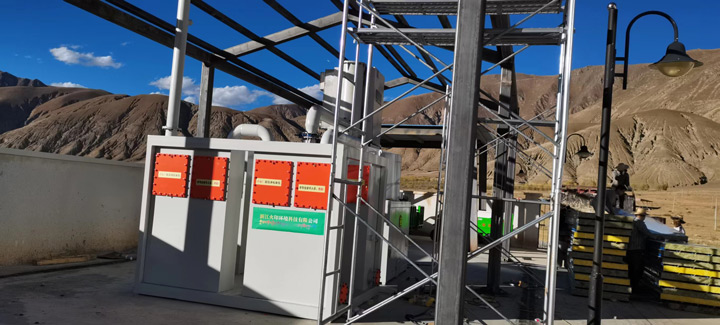
Operation status of fireprint domestic waste incinerator:
- 1. Domestic waste
- 2. Evaporation layer
- 3. Gasification layer
- 4. Carbonization layer
- 5. Pyrolysis layer
- 6. Ash layer
Domestic waste: Sorting out glass, metal, gypsum board, glass fibre, stone, bricks, electronic waste, and explosive items.
Evaporation layer: Domestic waste includes much water which will produce sublimation of water vapor when the temperature is over 100°C. Oil and fats will become gas with cyclic expansion.
Gasification layer: Most of plastics melt in 50-280°C. Plastics are reduced by volume under high temperature. Meanwhile, timber and other organic substances will be dried by evaporation of water.
Carbonization layer: Molecular bond of the whole domestic waste will be broken after a period of high temperature baking. The waste becomes black fabric carbon substance then.
Pyrolysis layer: Carbon’s burning point is about 380°C. Carbon matter will be shaped pyrolysis under the action of trance oxygen.The reduction process reaches an optimal status and the waste volume decreases quickly.
Ash layer: After carbon matter is shaped pyrolysis, the dropping white powder and bulk continue decomposingfor a long time under 380°C energy and hypoxic conditions. All fabric substances disappear and become powdered calcium when the temperature gradually decreases. This is the process of domestic waste being transformed to powdered calcium. All harmful materials of the waste are eliminated. The garbage then becomes harmless and weight reduction completely.
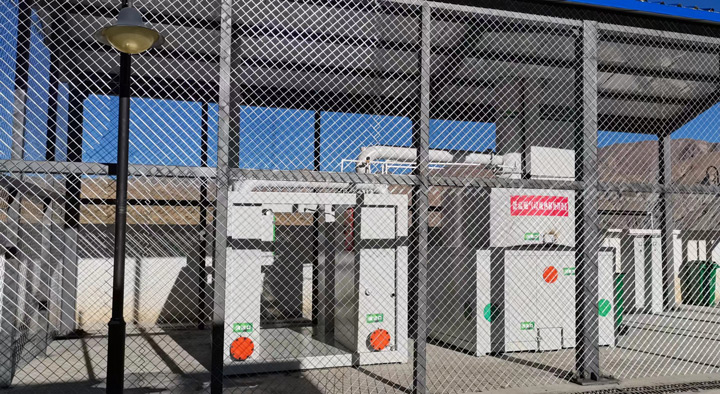
Disadvantages of high temperature domestic waste incinerator:
It consumes a large amount of oxygen when burning the domestic waste. High-power blast is normally used. Mineral raw materials are necessary to add to increase the temperature for burning. Thus, it produces a lot of ash and harmful gas.
The plastic melts to form a black liquid in high temperature, which mixes with cinder and the unburnt domestic waste, is extinguished under nitrogen then drops rapidly to the incineratorbottom to form hazardous solids.
The ash includes lots of dioxins. The ash cannot be landfilled and can only be saved because it is classified globally as hazardous solid waste.Effective methods to control fly ash are using the spray water in the chimney, dust bag, jetting activated carbon powder adsorption, dust bag beater, induced draft fan, or burning the smoke by oil again so it can be discharged under curtain standard.
The process is complicated, and the energy consumption is high. The fly ash cannot be controlled. Flue gas purification needs a lot of funds to maintain. The maintenance is difficult as well. The reduction is incomplete. The only advantage is to be able to run large-scale operation. Compared to landfill, the high temperature incinerator has a reduction process and the cinder is decreased by above 30%. Landfill is in fact to save the domestic waste and leave it to our future generations to handle. This is the phenomenon of modern human inaction.
Compared to the high temperature incinerator, Fire Print makes the green domestic waste incinerator.
Flue gas purification of domestic waste incinerator:
By using low temperature pyrolysis technology, the volume of harmful gas emissions is very low. Oxygen-enriched in air inlet is in trace quantity which can only maintain the burning process at low temperatures. Water in the domestic waste will be vaporized in a certain temperature. Vaporized gas combines the gas produced from the nature air expansion in material void to form a micro positive pressure in the cavity. The gas slowly enters the sediment collector by pipelines. After the flow rate is reduced in the sediment collector, most of tar and water vapor can be recycled.
When the temperature drops and the flow goes through the spray cooling system, escaped tar is recycled under the high-speed spray and room temperature wash. The air becomes clean after being adsorbed by active carbon and passing labyrinth pipelines.
There are non-recycled odour and harmful materials in the air. Those harmful materials are smashed by the vibration wave when passing the high voltage electric field. Harmful materials are formed by multi groups of molecules which will be separated to single group of molecules after the shock fission. Particulates and many harmful materials are recycled by the electric field negative polarity. Many -OH, hydroxyl radicals are produced in the electric field. The gas is mixed and purified several times and then discharged. The discharged gas becomes colourless and tasteless, and satisfied the international standard.
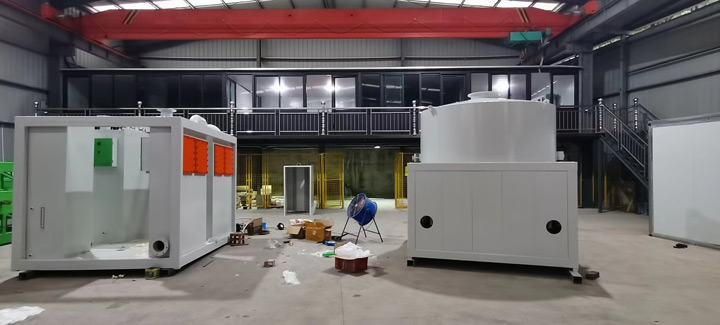
Furnace design
Fire Print low temperature incinerator, which case is made by 3mm stainless steel, has been used for 20 years in China mainland. The probability of weathering corrosion damage is rare. As the waste pyrolysis process needs manual leveling, the current design volume is between 5-6 cube. Itconsumes 1-1.5 cube white rubbish daily and 400-500 cube annually.
The feeding mechanism is designed by using a user-friendly external rubbish bin directly feeding technology. It reduces the labour intensity and has little impact on the environment of work done in the container. For the present, it’sa more reasonable design.
The reduction process doesn’t need the external energy. Gas purification process needs 50-60-degree electricity in order to meet the environmental emission standard.
